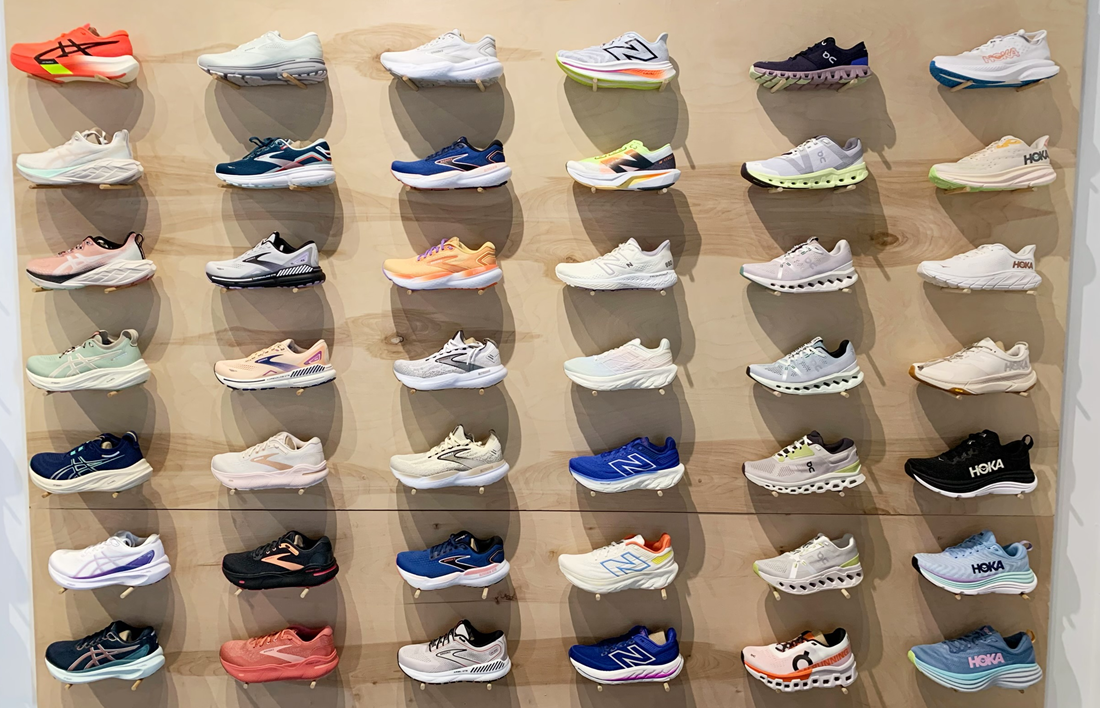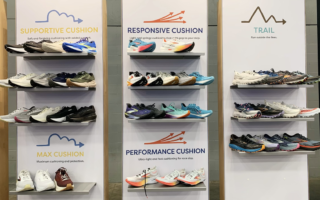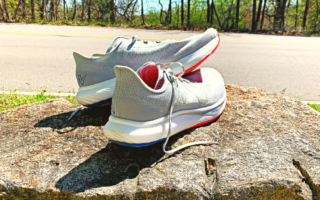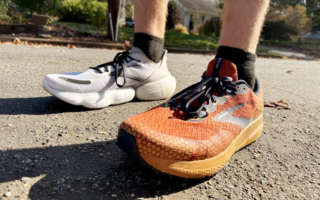Diversity, equity, and inclusion (DEI) are crucial principles companies and organizations use to advance their mission and promote a healthy work culture. The majority of workers agree. 56% of employed U.S. adults believe increasing DEI at work is a good thing, according to a Pew Research Center survey. However, only about 30% say it is extremely or very important to them to work somewhere with a mix of employees of different races and ethnicities or ages. (Yikes) Unfortunately, diversity, equity, and inclusion are being hijacked by “Big Running” (not to be confused with “Big Tobacco”) under the guise of helping runners create a well-rounded running shoe rotation.
Armed with research that shows using a variety of running shoes helps reduce injuries—and running boredom (probably)—companies are positioning each of their shoes as one piece to the running shoe rotation puzzle. Essentially, it’s all just marketing; it’s a way for them to sell even more shoes to naïve runners. And it’s working: the global running shoes market size stood at $48.4 B in 2022 and is anticipated to reach $74.2 B by 2031. We’re all fools! Morons, I tell ya! Yes, even you and me!
So, while I have no knowledge about how to increase diversity, equity, and inclusion in the workplace, I’m here today to help you craft a running shoe rotation that works for runners of all ages, ethnicities, body types, religions, and values. If you’re like Ron Burgundy and believe that “diversity” refers to an old wooden ship, this blog is for you.
Diversity
Just as it’s crucial to have diverse representation in the workforce, a well-represented running shoe rotation consists of varied shoes, brands, and colorways. Despite how woke you claim to be, don’t pretend you don’t “see color.” That means no all-white or all-black pairs. Always avoid any kind of segregation. Rather, ebony and ivory should live together in perfect harmony. Don’t stop at black and white. Continue the bi-color theme and add some hues to your shoes—can’t go wrong with brown, yellow, blue, orange, or red.
The brands represented in your running shoe rotation should reflect the global sport of running. You’ve got ASICS and Mizuno for Japan, HOKA for France (their birthplace, anyway), On for Switzerland, Adidas for Germany, Diadora for Italy, and too many in the U.S. You must alternate shoes from one run to the next based on a brand’s country. Bonus points if you alternate between continents. Never favor one brand over another, regardless of how much better they are. Think about how badly the other unimaginative brands will feel if you don’t spend your hard-earned money on them.
For the types of shoes, you’ll need pairs that come in all shapes and sizes. It’s important to be (shoe) body positive and buy both heavy and light shoes, shoes with tall and short stack heights, and big and small drops. Oh, and you’ll also need all shoe sizes represented. For both genders. That means sizes 7-15 for men and 5-13 for women. Not so fast—you’ll also need all available widths. For both genders. Narrow (B), medium (D), wide (2E), extra wide (4E) for men. And narrow (2A), medium (B), wide (D), and extra wide (2E) for women. Oof, that’s a lot of diversity, but you can never have enough!
Equity
Equity within a running shoe rotation is about considering a shoe’s unique characteristics and circumstances and treating each pair equally. It’s pivotal not to stereotype a shoe by its category. People don’t like to be labeled, so why would shoes? Your easy day shoe may be meant for recovery runs, but if you truly want an equitable shoe lineup, you must use that heavy, chunky shoe for speed workouts, daily runs, long runs, and, well…every run.
Yep, you guessed it: the same goes for race day shoes with carbon fiber plates. Start using the Nike Alphafly, Vaporfly, and any other shoe that makes you “fly” for recovery day. And for daily trainers, utilize them for those lactate thresholds, VO2 max workouts, tempo runs, and any and every non-daily training run. It’ll certainly keep your training interesting! Do track spikes count as shoes? Who knows! Better buy a pair to be safe even if you don’t live within 50 miles of a giant oval.
Inclusion
To have a truly inclusive running shoes rotation, you must ensure every pair accrues the exact same number of miles. If one shoe has 200 miles but another’s got just 50, that’s quite problematic. You never want to play favorites and treat your shoes differently. It’s time to admit your mistake and play catch up. Don’t you dare run in the 200-mile pair again until the 50-mile pair accrues 150 more miles. That might take a while, but it’s ok. You need all your shoes to feel like their “voices” or, rather, outsole rubber, is heard on the roads equally.
It’s about empowering your pairs to make meaningful contributions to your training block. If one pair’s outsole has more visible wear and tear than another, consider rubbing sandpaper on the bottom to ensure all your shoes are in the same condition and last an equal amount of time. If the midsole of another pair feels dead at 250 miles, you must stop running in all your other shoes at the 250-mile mark, no matter how durable they may be.
Diversity, equity, and inclusion are a powerful trio of concepts that more and more industries will steal to sell their products and services. “Big Running” isn’t the first and they won’t be the last. Personally, I’m terrified to see how Big Tobacco hijacks DEI to sell more cigarettes, cigars, pipes, and chew. It’ll be tough, but never underestimate the power of nicotine; it’s one hell of a drug.








